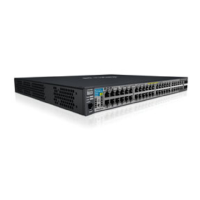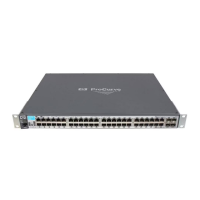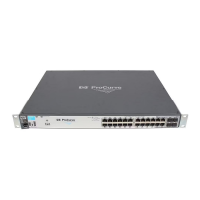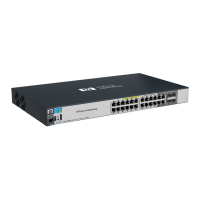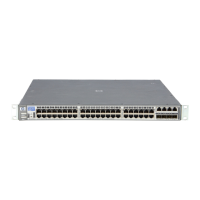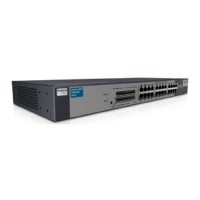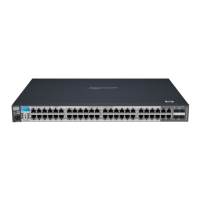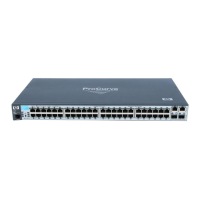Configuring Port-Based and User-Based Access Control (802.1X)
Terminology
a port loses its authenticated client connection, it drops its membership
in this VLAN. Note that with multiple clients on a port, all such clients use
the same untagged, port-based VLAN membership.
Authentication Server: The entity providing an authentication service to
the switch when the switch is configured to operate as an authenticator.
In the case of a switch running 802.1X, this is a RADIUS server (unless
local authentication is used, in which case the switch performs this
function using its own username and password for authenticating a
supplicant).
Authenticator: In ProCurve applications, a switch that requires a supplicant
to provide the proper credentials before being allowed access to the
network.
CHAP (MD5): Challenge Handshake Authentication Protocol.
Client: In this application, an end-node device such as a management station,
workstation, or mobile PC linked to the switch through a point-to-point
LAN link.
User-Based Authentication: The 802.1X extension in the switches covered
in this guide. In this operation, multiple clients on the same port must
individually authenticate themselves.
Guest VLAN: See “Unauthorized-Client VLAN”.
EAP (Extensible Authentication Protocol): EAP enables network access that
supports multiple authentication methods.
EAPOL: Extensible Authentication Protocol Over LAN,
as defined in the
802.1X standard.
Friendly Client: A client that does not pose a security risk if given access to
the switch and your network.
MD5: An algorithm for calculating a unique digital signature over a stream of
bytes. It is used by CHAP to perform authentication without revealing the
shared secret (password).
PVID (Port VID): This is the VLAN ID for the untagged VLAN to which an
802.1X port belongs.
Port-Based Authentication: In this operation, the first client on a port to
authenticate itself unblocks the port for the duration of the client’s 802.1X-
authenticated session. The switches covered in this guide use port-based
authentication.
12-7

